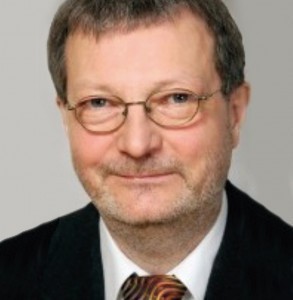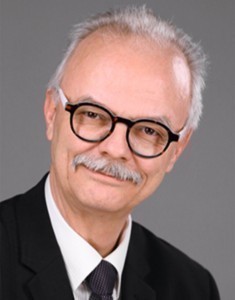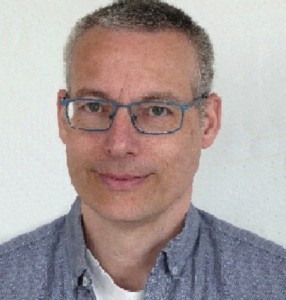The 27th New Dresden Vacuum Technology Colloquium was dedicated to sensory principles and production chains in two lecture blocks.
The 27th Dresden New Vacuum Technology Colloquium (NDVaK) took place online. In addition to the long-standing organizers Leibniz-Institut für Polymerforschung Dresden e.V., Europäische Forschungsgesellschaft Dünne Schichten e.V. and Deutsche Forschungsgesellschaft für Oberflächenbehandlung e.V., Creavac GmbH, Dresden, and Coating Consulting, Markkleeberg, played a key role in organizing the event. The perfect organization of the web conference by the Fraunhofer Institute for Organic Electronics, Electron Beam and Plasma Technology (FEP), Dresden, made a decisive contribution to the success of the event. As part of the NDVaK's basic topic "Coating, Modification and Characterization of Polymer Surfaces" with a focus on "Sensors on Polymer Surfaces", there were 16 presentations on sensory principles and sensor design and on technological aspects of sensor production such as surface functionalization, coating, encapsulation, cleaning, process monitoring, recycling and environmental compatibility as well as on applications of sensors in production chains. The opportunities for discussion offered were used extensively. The response to this event from the 88 participants was consistently positive.
Lecture block 1: Sensory principles
 Moderator in Speakers Corner: Dr. Steffen Heicke (Creavac GmbH, l.)J. Kunzmann (Smart Material GmbH, Dresden) discusses composites based on piezoelectric fibres. For special flexible and rigid actuator elements and ultrasonic transducers, coated in the Creamet® system from Creavac GmbH, design features, production details, characteristic values and property advantages will be communicated and further advantageous application possibilities of piezofiber composites in sensor and actuator technology in aviation, for energy harvesting and in ultrasonic technology will be presented.
Moderator in Speakers Corner: Dr. Steffen Heicke (Creavac GmbH, l.)J. Kunzmann (Smart Material GmbH, Dresden) discusses composites based on piezoelectric fibres. For special flexible and rigid actuator elements and ultrasonic transducers, coated in the Creamet® system from Creavac GmbH, design features, production details, characteristic values and property advantages will be communicated and further advantageous application possibilities of piezofiber composites in sensor and actuator technology in aviation, for energy harvesting and in ultrasonic technology will be presented.
F. Villasmunta (Wildau University of Applied Sciences) reported on the monitoring of the etching process for removing excess polymethyl methacrylate (PMMA) after filling through-silicon vias (TSV) using inductively coupled oxygen plasma (SENTECH SI 500 D). The plasma emission was analyzed UV- VIS spectrometrically as an endpoint control for the complete removal of the polymer. The selectively acting oxygen plasma does not attack previous coatings (SiO2, Cu, Si3N4) and mechanically polished surfaces.
A. Fery (Leibniz Institute of Polymer Research Dresden, IPF) draws attention to the sensory use of localized surface plasmon resonance (LSPR) on metallic nanoparticles for the label-free detection of attached analyte molecules, e.g. biomolecules. Optimized optical and electronic functionalities can be achieved by suitable arrangement of the nanoparticles with different length scaling. Here, the implementation of functional plasmonic nanoparticles in polymer shells and/or scaffolds, also utilizing self-assembly, is reported. Finally, the perspectives for surface-enhanced RAMAN spectroscopy (SERS) on colloidal metal particles and the effect of mechanical stresses were discussed.
R. Ottermann (Institut für Mikroproduktionstechnik, Garbsen) described a vacuum coating device and the process sequence for the direct deposition of component-inherent sensors, in this case strain gages made of Ni80Cr20, Ni60Cr40 and constantan, by means of magnetron sputtering on large components. Metallic or silicon shadow masks are used for structuring. With strain gages applied in this way, ageing processes are avoided, as is the case with glued or mechanically attached polymer film-supported sensors. The coating system from scia Systems GmbH is part of the SCALE research facility for researching production technology in XXL format.
 Moderator in Speakers Corner: Dr. Andreas Holländer (Fh IAP, Potsdam)There is an increasing number of applications for magnetic field sensors, for example in the control of machines and drives, in vehicle construction and space technology, in biomedical technology and consumer electronics. D. Makarov (Helmholtz-Zentrum Dresden-Rossendorf e.V., HZDR) reports on the design and production of 3D moldable magnetic field sensors made of metallic thin films on 1 to 150 µm thick polymer foils, which are adapted to the respective application and use the magnetoresistive or Hall effect. The so-called giant magnetoresistance sensors consist of 20 to 50 magnetic and non-magnetic double layers. Applications for "smart skins", "smart textiles", "soft robotics" and in the human-machine interface are described.
Moderator in Speakers Corner: Dr. Andreas Holländer (Fh IAP, Potsdam)There is an increasing number of applications for magnetic field sensors, for example in the control of machines and drives, in vehicle construction and space technology, in biomedical technology and consumer electronics. D. Makarov (Helmholtz-Zentrum Dresden-Rossendorf e.V., HZDR) reports on the design and production of 3D moldable magnetic field sensors made of metallic thin films on 1 to 150 µm thick polymer foils, which are adapted to the respective application and use the magnetoresistive or Hall effect. The so-called giant magnetoresistance sensors consist of 20 to 50 magnetic and non-magnetic double layers. Applications for "smart skins", "smart textiles", "soft robotics" and in the human-machine interface are described.
U. Vogel (Fh FEP, Dresden) talks about the prototype development and production of OLED-on-silicon microdisplays, in which light sources (R-G-B-W) and photosensors are combined in a silicon chip. He impressively demonstrates that it is possible to effectively monitor both the growth and reduction of dangerous biofilms in situ and in the dark, e.g. on medical implants, surgical instruments and in catheters. The light emitted by the OLEDs and reflected by contaminated surfaces is detected in parallel with the integrated photosensors. The inactivation and removal of stearic acid, methylene blue and Escheria coli bacteria through the photocatalytic effect of TiO2 coating has been demonstrated.
Plastic films and containers are provided with an adapted barrier system of metallic, oxidic or organic layers or combinations thereof in order to reduce the permeation of atmospheric gases (H2O, O2) to a level sufficient for the application. The presentation by W. Grählert (Fraunhofer Institute for Material and Beam Technology, IWS, Dresden) provides an overview of how the permeation properties (permeation rate and breakthrough time of the permeate) of coated plastic films can be determined using optical methods. Using laser diode spectroscopy (TDLAS, Tunable Diode Laser Spectroscopy), permeated water vapor can be reliably quantified over a range of 6 orders of magnitude with a detection limit of 10-6 g m-2 d-1. Shorter measurement times are made possible by hyperspectral imaging (HSI) in combination with artificial intelligence evaluation methods. The spatially and spectrally resolved data sets recorded from a defined area of the barrier film are evaluated using a prediction model developed in advance.
After a brief introduction to the structure and properties of hydrogels, S. Schreiber (TU Dresden, Institute for Solid State Electronics, IFE) will discuss the piezoresistive effect in miniaturized silicon sensors in combination with a pH-dependent change in the volume of a hydrogel. The resulting deformation of the thin base of a silicon measuring cell is compensated for by an external "counterforce". This can be an external air pressure, an external temperature-controlled hydrogel or an integrated bisensitive intramolecular hydrogel. Other conceivable sensor configurations will be discussed.
Lecture block 2: Contributions to production chains involving sensors
 Moderator: Dipl.-Phys. Frank-Holm Rögner (Fh FEP, l.)Magnetron sputtering is an established technology for many applications, but has not yet been used for the industrial deposition of active semiconductor layers such as absorbers in thin-film solar cells, because the bombardment with high-energy particles (ions, atoms, electrons) associated with the magnetron discharge generates disruptive defects in semiconducting material. K. Ellmer (Optotransmitter - Umweltschutztechnologie e. V., OTU, Berlin) shows how the magnetron discharge can be modified without losing the advantages of plasma-assisted layer growth. For this purpose, a multifunctional plasma and coating sensor - based on a conventional oscillating quartz for coating thickness measurement - is used to measure the deposition rate, energy flow, plasma density and electron temperature quasi-simultaneously and to calculate the ion/neutral particle ratio and the average energy of the deposited coating particles, which are important for the characterization and optimization of plasma processes for defect-sensitive coatings. Results are reported for (Ga, In)N, Zni3N2 and TCO coatings.
Moderator: Dipl.-Phys. Frank-Holm Rögner (Fh FEP, l.)Magnetron sputtering is an established technology for many applications, but has not yet been used for the industrial deposition of active semiconductor layers such as absorbers in thin-film solar cells, because the bombardment with high-energy particles (ions, atoms, electrons) associated with the magnetron discharge generates disruptive defects in semiconducting material. K. Ellmer (Optotransmitter - Umweltschutztechnologie e. V., OTU, Berlin) shows how the magnetron discharge can be modified without losing the advantages of plasma-assisted layer growth. For this purpose, a multifunctional plasma and coating sensor - based on a conventional oscillating quartz for coating thickness measurement - is used to measure the deposition rate, energy flow, plasma density and electron temperature quasi-simultaneously and to calculate the ion/neutral particle ratio and the average energy of the deposited coating particles, which are important for the characterization and optimization of plasma processes for defect-sensitive coatings. Results are reported for (Ga, In)N, Zni3N2 and TCO coatings.
A. Holländer (Fraunhofer Institute for Applied Polymer Research, IAP, Potsdam) presents a measurement method for monitoring the thickness distribution of thin transparent layers in the sub-micrometer range on or between transparent polymer films in the roll-to-roll production process. For this purpose, a fluorescent dye is added to the coating material in such a low concentration that the properties of the coating are not affected. The fluorescence intensity of the fluorophore molecularly dispersed in the coating is proportional to the thickness of the coating. For example, the thickness distribution of 1 µm thick transparent organic barrier coating layers on PET and of the EVOH barrier layer in a coextruded PE-EVOH-PE composite can be measured inline. Further work is required on measurement technology and software suitable for industrial use and on dye selection and feeding.
F. Gruber (Fh IWS, Dresden) reports on experiments with the aim of realizing a cost-effective sorting of black plastic particles with imaging fluorescence spectroscopy in the near infrared in combination with classification by machine learning or with deep learning classification algorithms, whereby a sorting purity of 99.9 % is aimed for. The algorithms used are linear discriminant analysis (LDA), k-nearest neighbor classification (KNN), support vector machines (SVM), ensemble models with decision trees (ENSEMBLE) and convolutional neural networks (CNN). In addition, the hyperparameters of the classification algorithms were optimized with a search algorithm. Many different mixtures of plastics of different plastic classes were tested and classification accuracies between 90.0 and 99.9 % were achieved, which is considered promising for the sorting of black plastic waste.
 Co-organizer: Dipl.-Chem. Tobias Müller (Coating Consulting)With reactive multilayers (RMS), which consist of a stack of several hundred nanoscaled thin layer pairs, mostly of Ni and Al, but also of Zr/Si, heat-sensitive components can be joined in combination with soft or hard solders. Through a brief heat input (laser, electric spark), RMS layers exothermically form an intermetallic compound and melt the solder on both sides of the component or on a self-supporting foil in milliseconds. E. Pflug (Fh IWS, Dresden) demonstrates this bonding process on a piezoelectric CMOS strain sensor via an RMS film (Ni/Al, 40 µm thick) with a printed circuit board. A sensitivity 2.5 times higher than with epoxy bonding is achieved.
Co-organizer: Dipl.-Chem. Tobias Müller (Coating Consulting)With reactive multilayers (RMS), which consist of a stack of several hundred nanoscaled thin layer pairs, mostly of Ni and Al, but also of Zr/Si, heat-sensitive components can be joined in combination with soft or hard solders. Through a brief heat input (laser, electric spark), RMS layers exothermically form an intermetallic compound and melt the solder on both sides of the component or on a self-supporting foil in milliseconds. E. Pflug (Fh IWS, Dresden) demonstrates this bonding process on a piezoelectric CMOS strain sensor via an RMS film (Ni/Al, 40 µm thick) with a printed circuit board. A sensitivity 2.5 times higher than with epoxy bonding is achieved.
S. Gerullis (INNOVENT e.V. Technologieentwicklung, Jena) shows how effective gas sensors with SnO2 layers with an advantageous near-surface porosity can be deposited by atmospheric pressure chemical vapor deposition (APPCVD) with a non-thermal atmospheric pressure plasma jet using tin tetrabutyl as precursor and air as working and reactive gas on 300 °C glass or silicon substrates. With adapted parameters, layers with a resistivity of 70 mΩcm were deposited and characterized by surface and thin-film analysis and tested for water vapor and ammonia at different sensor temperatures and test gas concentrations.
The feasibility of nature-inspired, biodegradable semiconductors in thin-film transistor structures (TFT) with non-degradable metal contacts (Au, Al) and AlOx-based insulators is known. M. Hoffmann (Fh FEP, Dresden) presents functioning, fully biodegradable TFT structures using a non-toxic organic semiconductor, biodegradable gate, source and drain contacts made of biodegradable and biocompatible magnesium, a biodegradable polymer for the gate insulator (here gelatine) and polylactic acid (PLA) as substrate. The basic technologies are vacuum deposition of magnesium and spin coating for the gelatine. By combining drying and plasma treatment and with seed layers, finely structured conductive tracks can be applied to the polymer substrate in an adhesive manner. It is expected that applications in bioresorbable active medical implants will be possible.
S. Barth (Fh FEP, Dresden) reports on the deposition of thin films of aluminum nitride (AlN) or scandium-doped aluminum nitride (AlxSc1-xN) on flexible substrates for sensor technology and energy harvesting by reactive cosputtering with the pulsed double-ring magnetron sputtering source DRM 400 (deposition rate up to 200 nm/min, substrate diameter maximum 200 mm) with nitrogen as reactive gas. The mechanical, electrical and piezoelectric properties depend heavily on the process parameters. The influence of pressure and pulse mode, doping, seed layer and substrate material is discussed here.
Conventional lithographic processes have disadvantages in terms of design flexibility and costs for individualized, usually small batch sizes. Digital additive printing processes are therefore being considered, particularly for flexible sensors on polymer films and paper, which in principle also allow roll-to-roll production of sensors. M Fritsch (Fraunhofer Institute for Ceramic Technologies and Systems, IKTS, Dresden) will report on the development of customized functional inks and pastes for printing metallic electrodes and sensor-active layers on thermally sensitive substrates. Previous applications include temperature, pH and gas sensors and heaters for electrochemical and magnetic sensors. Line laser sintering can also be used to apply materials that are difficult to sinter.
Most of the abstracts for the lectures and the lecture presentations can be requested from the Institut für Polymerforschung Dresden e. V.
The 28th New Dresden Vacuum Technology Colloquium is planned for fall 2022, restoring the biennial cycle.


